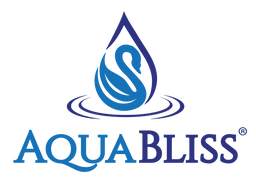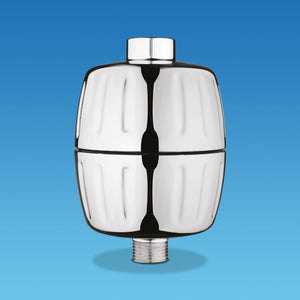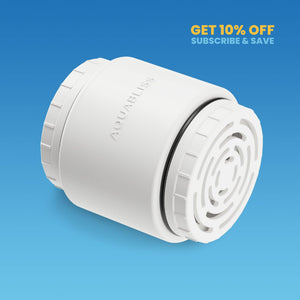Most people in the United States have access to tap water straight from the faucet in their homes and public places such as restaurants and cafes. But, what exactly is in the drinking water we consume every day?
Where does it come from? Are water treatment processes effective? And most importantly, is it safe to drink? In this article, we'll explore the tap water quality in the United States, its sources, water systems, the filtration processes it goes through, and how it compares to bottled water and filtered water.
Read on to discover more about this essential — yet often overlooked — resource.
What’s in Tap Water & Is It Safe to Drink?
Before we get into the details, it's essential to understand that, generally, public drinking water supplies in the U.S. are considered safe drinking water due to stringent regulations.
Thanks to federal laws such as the Safe Drinking Water Act (SDWA), this water undergoes several treatments and monitoring to ensure it meets federal drinking water standards set by the Environmental Protection Agency (EPA).
The result is that most tap water is safe for human consumption with only some exceptions. However, tap water contaminants can still be an issue, especially in certain rural or industrial regions like Flint, Michigan.
Contaminants such as lead, toxic metals, and unregulated contaminants like microplastics or trace pharmaceuticals may still pose potential health risks.
Should I Drink Tap Water?

According to the Natural Resources Defense Council (NRDC), 85% of the U.S. population has access to safe drinking water. However, the remaining 15% could face contaminated water from local sources.
The tap water database from the Environmental Working Group (EWG) allows you to check your local water quality report by entering your zip code to understand the drinking water contaminants in your area.
Common contaminants found in U.S. water systems include:
- Lead
- Arsenic
- Aluminum
- Uranium
- Herbicides
- Pharmaceuticals
These contaminants may come from various sources, including plumbing fixtures, industrial waste, or agricultural runoff. Trace amounts of these substances may lead to adverse health effects if consumed over long periods.
It's important to check your consumer confidence reports (CCRs) provided by your local water utility or local water supplier. These reports detail the levels of regulated and unregulated contaminants in your drinking water supplies and compare them with maximum contaminant levels (MCLs) set by the EPA.
What Are the Sources of My Tap Water?
The sources of your tap water vary depending on where you live. The U.S. gets its water supplies from surface water (like rivers and lakes) and groundwater (from wells and aquifers).
Some cities rely on public water systems that draw from large rivers or reservoirs, while others tap into groundwater through private wells.
For example:
- New York City gets 90% of its supply from the Delaware River Basin.
- Washington, DC sources 100% of its drinking water from the Potomac River.
- Los Angeles gets half of its water from the Owens River.
Understanding your water's taste or potential issues like hydrogen sulfide (which can give water a rotten egg smell) depends on these sources.
You can always reach out to your local health department or local water utility to learn more about your area’s water quality.
How Is Tap Water Filtered and Treated?

If you receive water from a community water system, it has likely undergone several stages of water treatment.
These steps include:
- Catchment: Water is collected from surface water sources or groundwater.
- Screening: Large debris like plants, trash, and sediment is removed.
- Coagulation and Flocculation: Chemicals like aluminum sulfate are added to bind tiny particles together.
- Filtration: The water is passed through sand, gravel, or activated charcoal filters to remove any remaining particles, like total dissolved solids.
- Disinfection: Chlorine or disinfection byproducts are added to kill harmful microorganisms.
In some regions, water hardness may be an issue. The presence of magnesium ions and calcium in hard water can affect your plumbing and health.
Water filters, such as those from AquaBliss, can help mitigate these effects by filtering out contaminants and adding beneficial minerals back into the supply.
What’s Better: Bottled Water, Tap Water, or Filtered Water?
Many people believe that bottled water is a safer option, but that's not always true. Bottled water is regulated by the FDA rather than the EPA, and it may simply be repackaged tap water.
Furthermore, bottled water can be contaminated with chemicals like BPA and PET from plastic, especially when exposed to heat. A more sustainable and cost-effective solution is to use water filters.
Depending on the water filter you choose, such as reverse osmosis or activated carbon filters, you can remove up to 99.999% of common contaminants from your tap water, providing clean, safe water without the environmental impact of plastic bottles.
Bottom Line
It’s important to ask, "What’s in my tap water?" While most U.S. water systems provide safe drinking water, it’s not always perfect. Checking your annual water quality report and using water filters can ensure that you're drinking the best quality water for your human health.
AquaBliss offers solutions designed to restore the beneficial minerals in your water, helping you combat the effects of hard water. Contact AquaBliss today to learn how their products can improve your drinking water quality and protect your family’s health.







